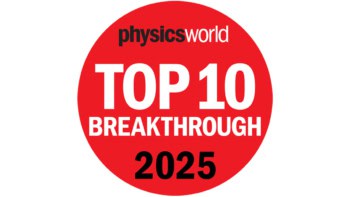Physics World reviews Science and the City: the Mechanics Behind the Metropolis by Laurie Winkless

Like most people, we at Physics World seldom give much thought to what lies beneath city streets. For the past few months, however, the view from our office has been dominated by road works, and observing the fluorescent-jacketed contractors as they rip up existing pipes and cables and install new ones has given us a fresh appreciation for the city’s hidden infrastructure. Readers in search of similar insights (but without the constant rumble of heavy machinery outside their workplace) would do well to pick up a copy of Laurie Winkless’s book Science and the City: the Mechanics Behind the Metropolis. In it, Winkless, a physicist and writer based in London, UK, delves into the structures that define modern cities and the services that make them tick, from soaring skyscrapers to subterranean sewers.
Written in a chatty, informal style (at one point, Winkless refers to herself as “your friendly science guide”), the book is divided into chapters that focus on different components of city life, including electricity, water, roads and communication. Winkless is not, however, solely interested in explaining cities as they are now. She is also keenly attuned to the ways they may change in the future, and for physicists, this is likely to be the most appealing aspect of the book. Winkless’s scientific background is in thermoelectric devices that harvest waste heat and transform it into electricity, but thanks to conversations with experts in other fields, her book is dotted with numerous short, snappy accounts of the latest developments in a wide variety of “green” technologies.
Some of these technologies may never make it out of the lab, while others will, in Winkless’s judgment, “remain a toy for environmentally friendly millionaires”. A few, though, may already be on their way to a city near you. Both Dubai and the Chinese city of Qingdao launched pilot projects for hydrogen-powered trains in 2015. And those noisy construction workers outside Physics World’s office? They’re installing charging plates for a new hybrid-electric bus service.
- 2016 Bloomsbury Sigma £16.99hb 304pp


